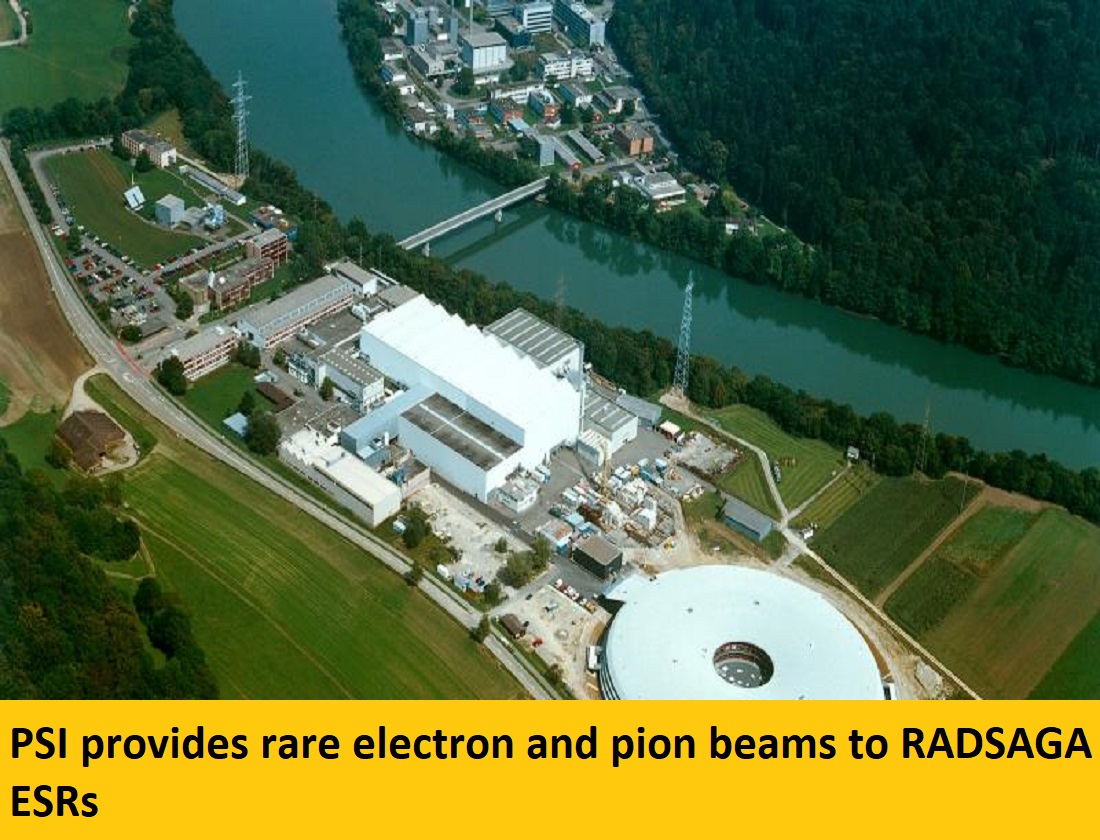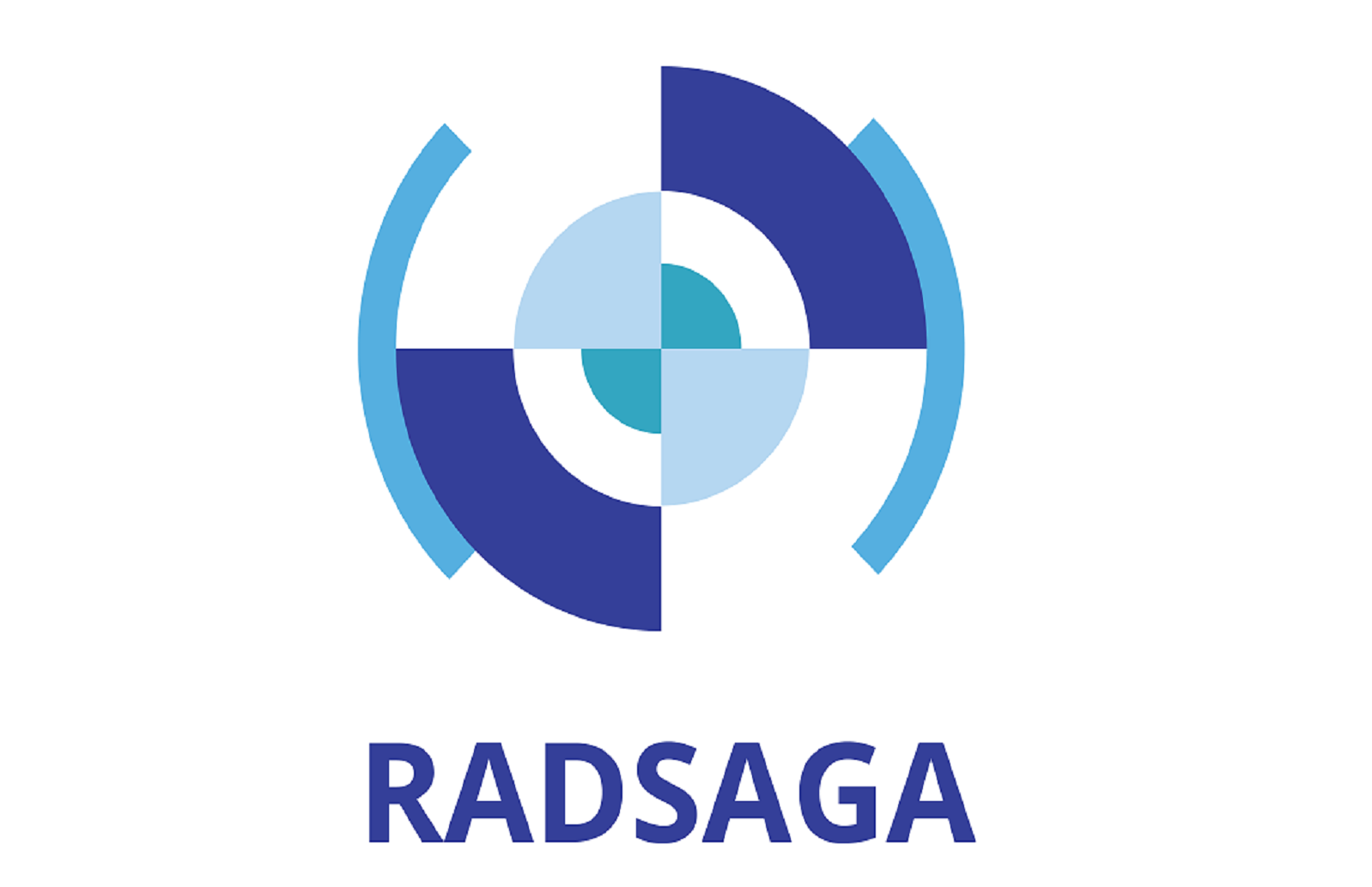PSI provides rare electrons and pions beams to RADSAGA ESRs
On the Swiss countryside by the river Aare, close to the village of Villigen, the Paul Scherrer Institute (PSI) is located. The RADSAGA project recently had a testing opportunity at PSI during almost two weeks, November 14 – 25, at one of its electron and pion secondary beam lines: piM1.
Three Early Stage Researchers (ESRs) were present during the irradiation campaign: Sascha Lüdeke (ESR01), Daniel Söderström (ESR02) and Andrea Coronetti (ESR15). Both ESR 2 and 15 were testing memories in the piM1 beam line. ESR02 tested the stuck bit susceptibility from electrons of a Synchronous Dynamic Random Access Memory (SDRAM) from ISSI, and ESR15 tested COTS Static Random Access Memories (SRAM) from Hirex, Cypress and ISSI for pion single event upset (SEU) and form Lyontek and Brilliance for pion-induced latchup (SEL) for cross section comparison with protons data. ESR01 helped to perform these experiments and with related work with the beam line and set-up.
The reason why it was possible to perform these separate irradiation tests with electrons and pions at the same beam line is related to how the beam is created. At PSI there is a proton beam produced by a cyclotron with particle energies up to 590 MeV. This beam line is the High Intensity Proton Accelerator (HIPA). On its way to its final target (the spallation target at the Swiss Spallation Neutron Source, or SINQ) the proton beam traverses two separate carbon targets: target E (TE) and target M (TM). The piM1 beam line takes secondary particles from the HIPA beam interaction with TM, and leads them 21 m further down to the experiment position.
The particles emitted from the interactions at TM are mainly pions, electrons, muons and protons. At lower momenta, up to about 115 MeV/c the piM1 beam consists almost solely of electrons, and at larger momenta the beam composition becomes increasingly dominated by pions.Two bending magnets, turning the beam 75° each, are part of the piM1 beam line optics. These magnets allow the user to select particles with a certain charge to momentum ratio to be guided to the experiment area by altering the magnetic field in them, making it possible to choose the energy and species of the particles that will strike the device under test (DUT).
At the location of the DUT, the beam intensity and size are measured and used to calculate the particle fluence on the device, i.e. the total number of particles per unit surface. The fluence and number of Single Event Effects (SEEs) are then in turn used to derive the cross section for SEE, which is proportional to the probability of an SEE occurring for that particle and energy. This can then be used to calculate the error rate in the application environment (e.g. space, high-energy accelerators…).
The obtained results are presently under analysis and are planned to be used in scientific publications, providing valuable information about the impact of such particles on electronics reliability, in line with the main RADSAGA objectives.
ESR02 - Daniel Söderström
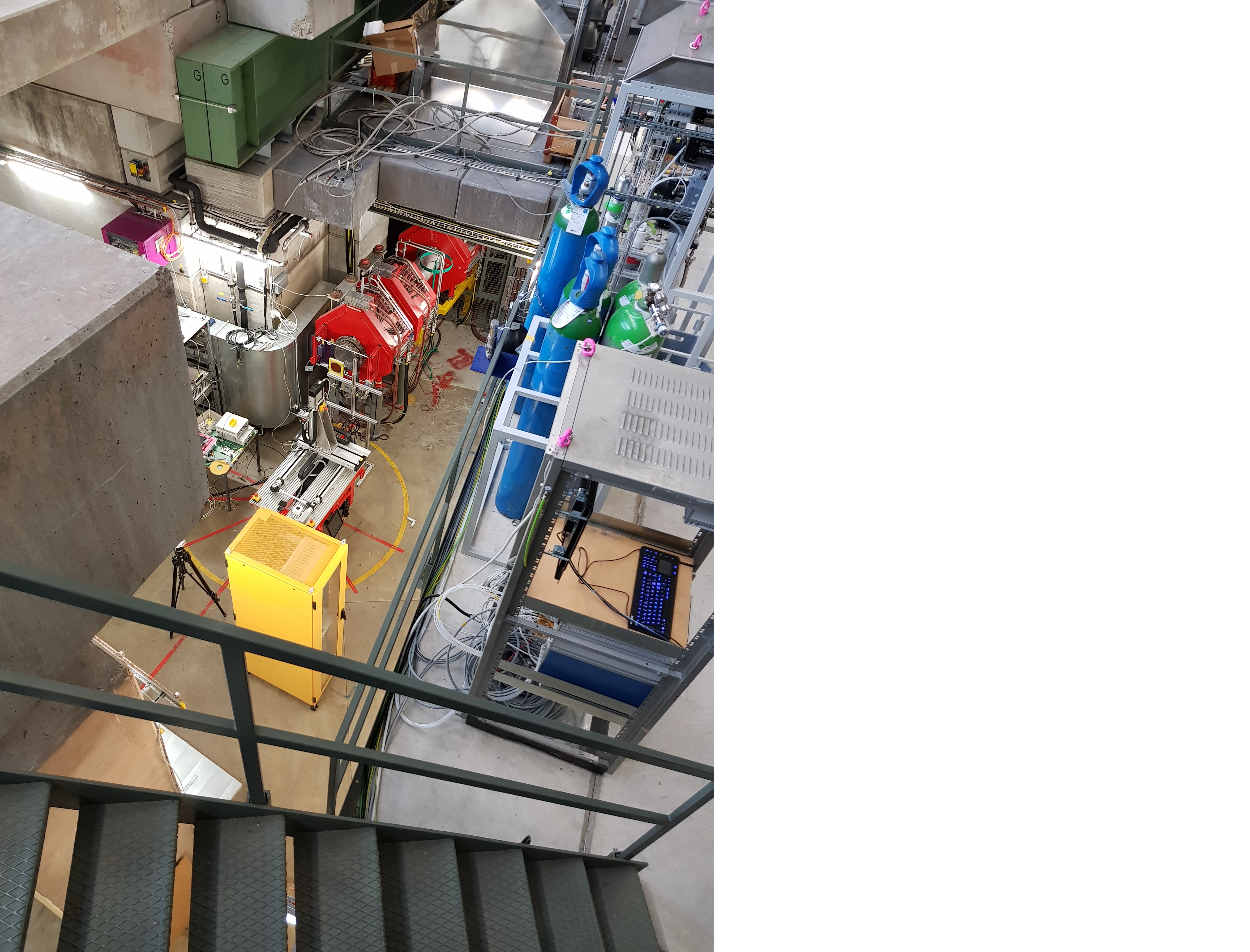
The piM1 experimental area seen from above (Credit Daniel Söderström).
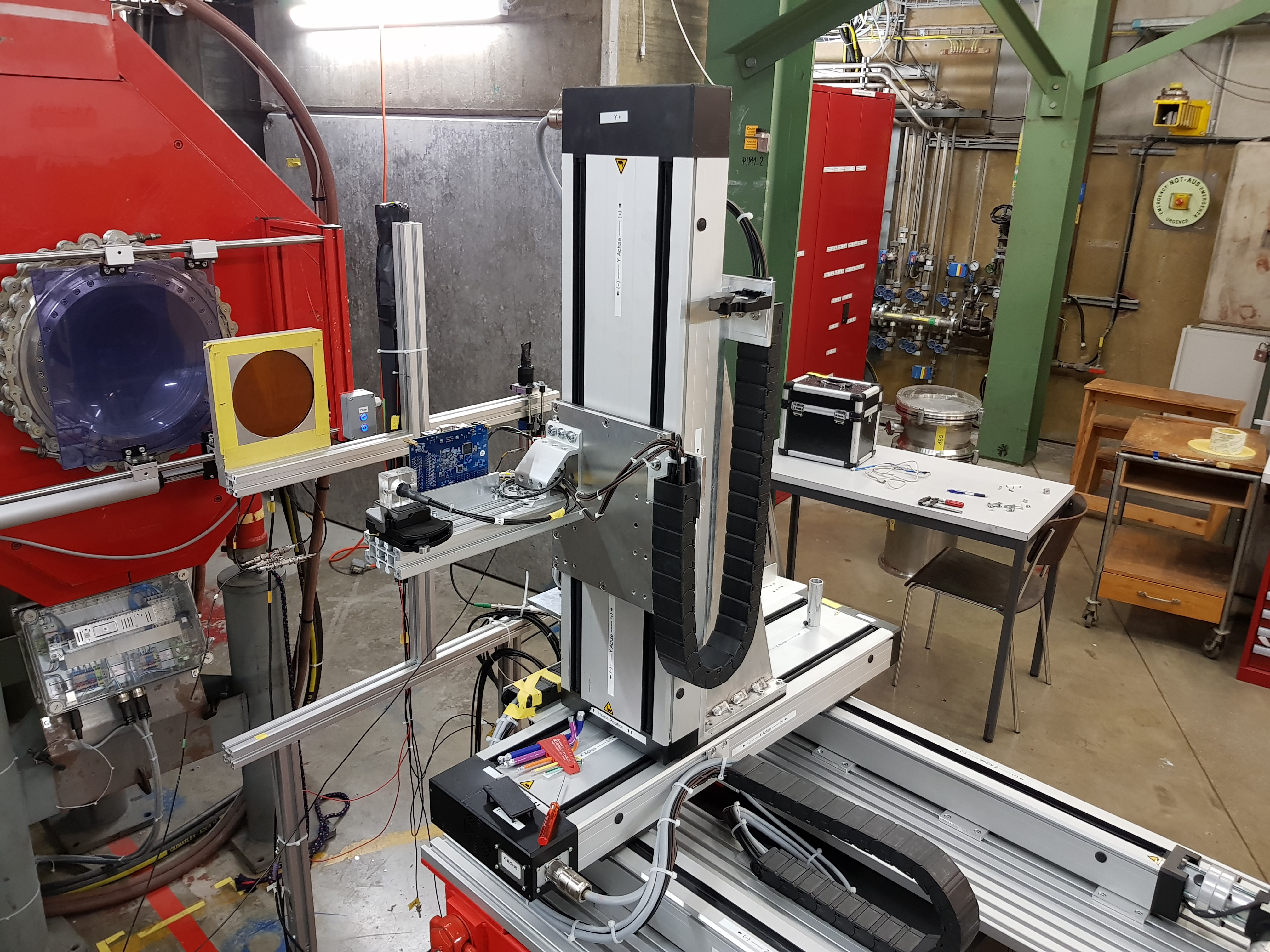
ESR02's DUT (blue PCB) mounted in front of the beamline exit window (covered with a blue screen which is removed when irradiation starts) and an ionization chamber (with yellow frame), (Credit Daniel Söderström).
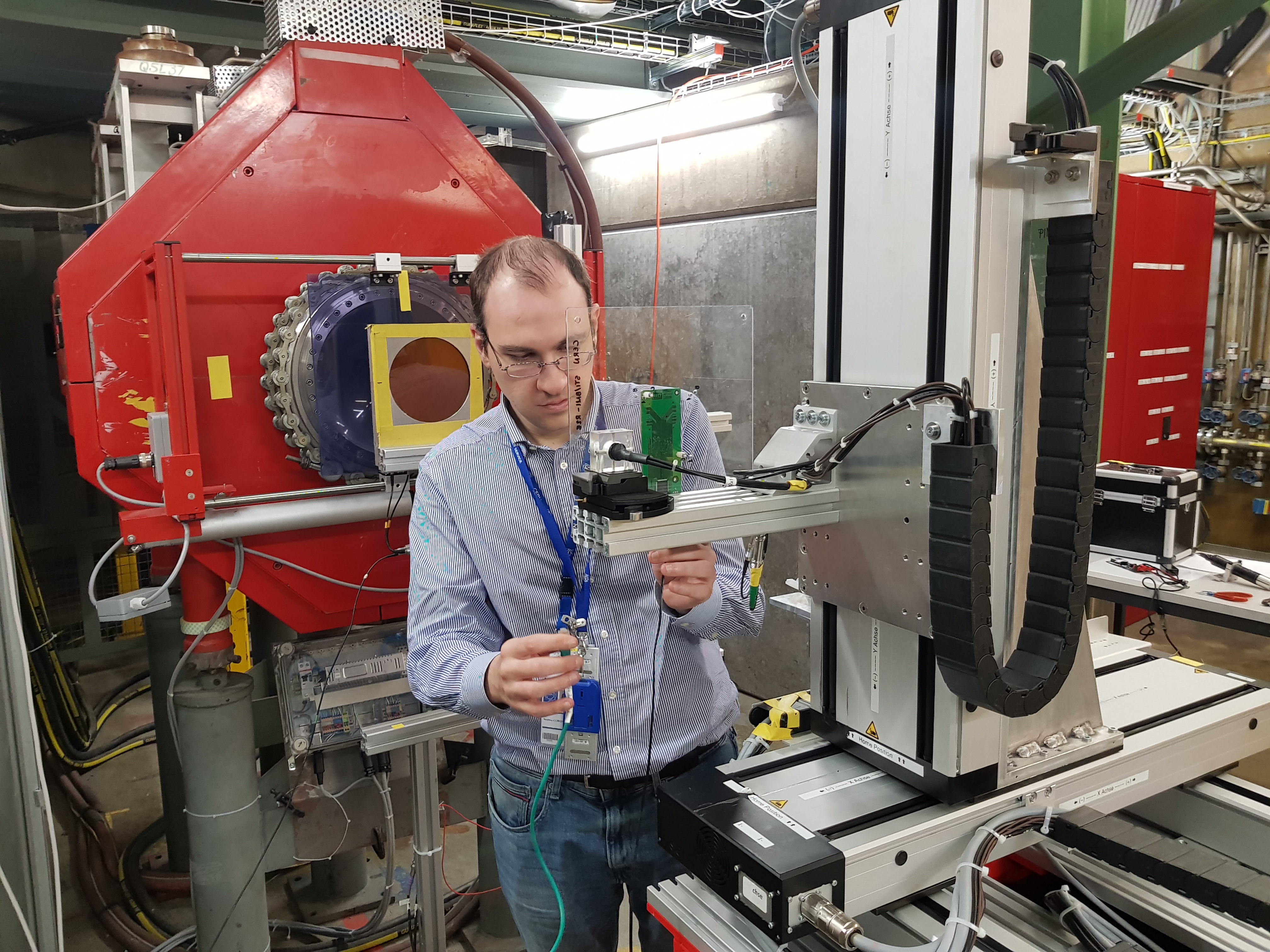
ESR15 mounting a DUT in the beam line (Credit Daniel Söderström).
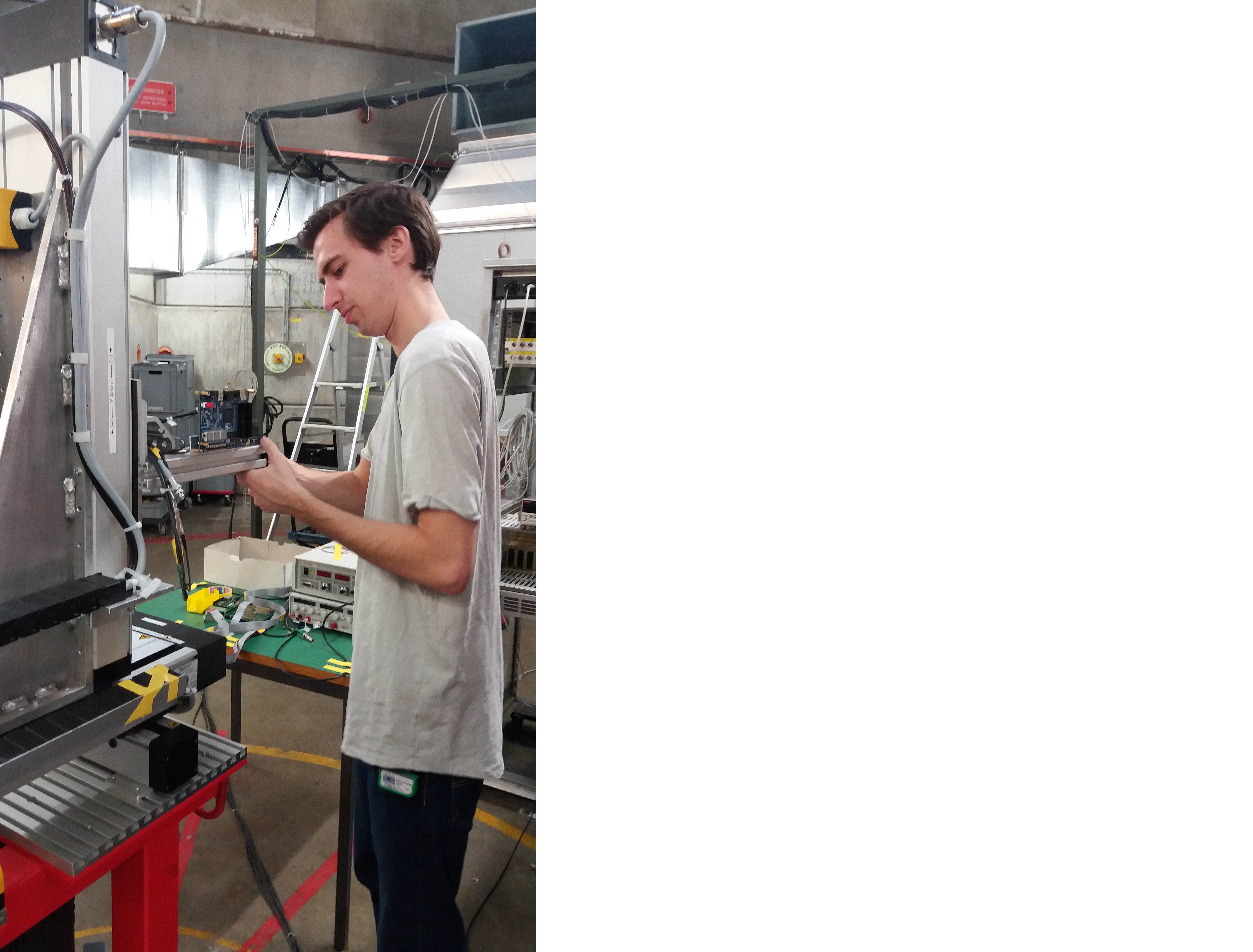
ESR02 mounting a DUT in the irradiation position (Credit Andrea Coronetti).
